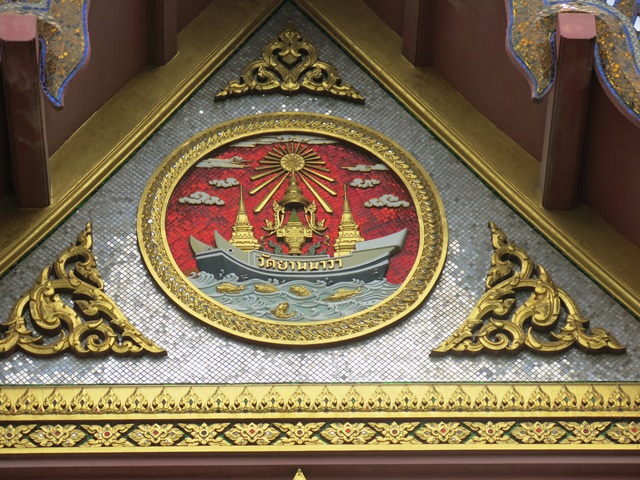Time on my hands in Bangkok. Where to go, what to explore without going too far afield or have to fork out too many travel expenses… decisions, decisions.
Sometimes, it isn’t that I necessarily have an urge to see a certain place, but maybe it is that I have noticed a particular area when passing through at another time. There are things that appeal to me, that catch my eye – architecture, laneways, historic context and so on, and it is those things that will be the reason why I return to take in a bit more detail.
During a couple of previous visits, not so long ago, I had found myself in an area that I don’t normally have much to do with, this being Sathorn district. For me, its very name always conjured up memories of the busy but traffic-snarled main road of the same name, divided by a waterway and the two sides being distinguished by the fact they were either North (“neua” – เหนทอ) or South (“tai” – ใต้). This was the area that was home to two important locations at that time, one being the hospital in Thanon Convent (Road – ถนนคอนแวนต์) – essential for solving a few health problems of mine, and the other being Immigration in Thanon Suan Phlu (Road – ถนนสวนพลู) – essential for visa extensions.
Dust, heat, noise. Not my favourite combination and consequently not my favourite place to visit. These days, however, now that I can choose to visit, rather than be obliged, I find it an interesting district to investigate; whilst there might not be distinctive tourist attractions as such, I find the network of laneways and the architecture –both new and old – fascinating to see.
And so it came about that I was once more back in Bangkok, and once more had time on my hands. Where to go, what to explore… I looked at a map of the Sathorn area, ignoring restaurants, businesses, and international schools, and instead opting for a park and two temples that seemed to be within easy reach of each other.
Don’t be fooled!
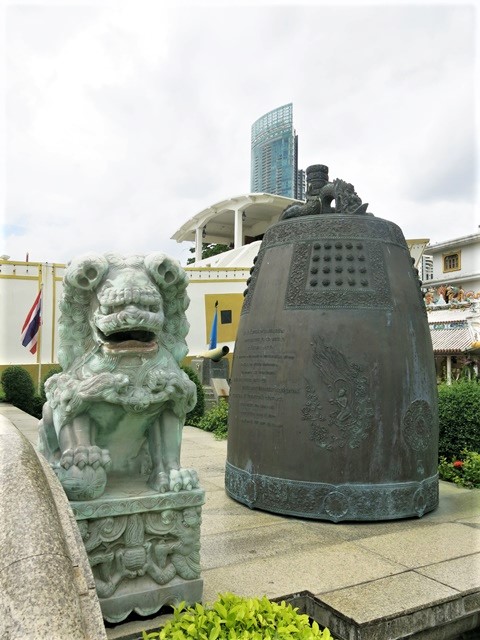


How I didn’t get to Wat Prok (วัดปรก) and the park it is set inside is another story in itself. Suffice to say, what looked easy on a map did not translate into walkable reality, and asking for directions – or even trying to ascertain if there was such a place, was near to fruitless. One of two street cleaners was none the wiser, whilst the other remembered it as being a place where people can go to exercise; obviously I wanted to go jogging. After tromping the same stretch of road and back, rather than having to face the two street cleaners again and induce mutual awkwardness, I opted for a group of people whom I do not normally approach. Motorbike taxi drivers.
The reason for this is that, understandably, their train of thought is along the line of “why should I tell you when you can pay me to take you”. Quite right, too, as it is their knowledge and subsequent livelihood that I am trying to eke out of them for free. However, that aside, one man told me that there is such a park, but you have to go around the houses to get there, and as I followed the directions that he had given me I decided that yes, it was a long way, and that I had gone around enough houses; it was time to call it quits.
In hindsight I might have fared better if I had had more time, and this problematic hindrance was due to the fact that I had been slow to get moving – the weather on this day was dull and dreary, and also that I had been surprised at how interesting – read that as absorbing and distracting – the first temple on my itinerary had been. Wat Yannawa.
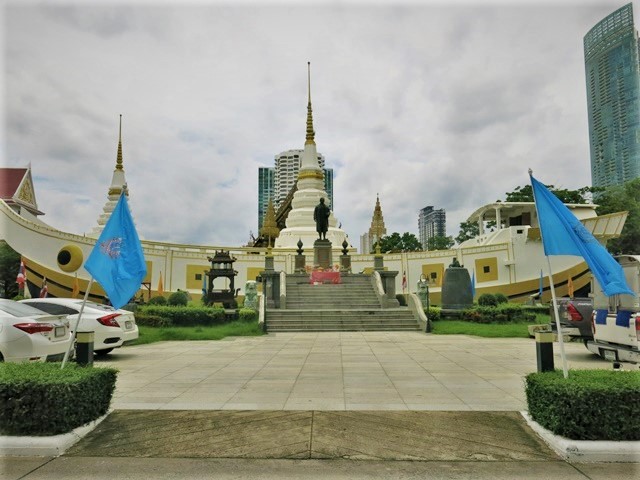
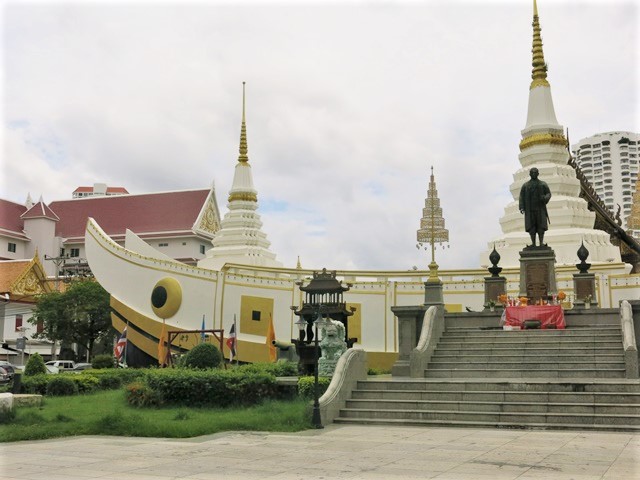

The moment you step inside its grounds, there is no surprise as to why Wat Yannawa (วัดยานนาวา) has earned itself its nickname in English of “the boat temple”. In fact, it was the description of part of the temple complex being shaped in the form of a boat that attracted my curiosity in the first place, when I was trying to decide where to explore, but I hadn’t expected it to really be like a boat – and I mean really. But it is.


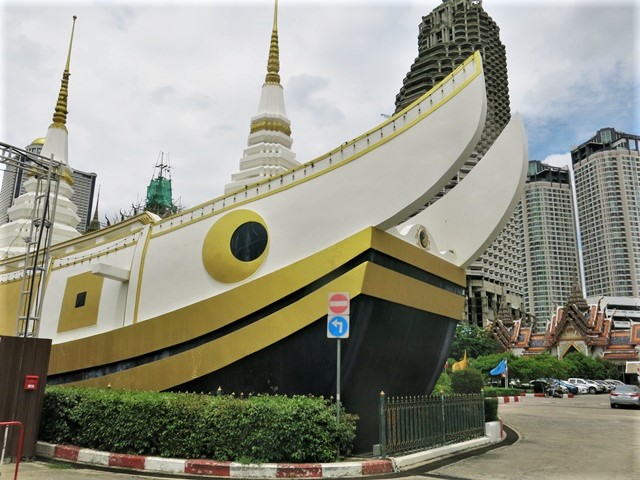
Situated on a part of Charoen Krung Road (ถนนเจริญกรุง) which is beyond the hustle and bustle of the long stretch from Chinatown to Sathorn, it makes a pleasant change to wander along this quieter part at a leisurely pace, before entering the grounds through an impressive gateway entrance. I wouldn’t have known it to look at it, not being a temple expert, but temple information tells me that its history goes back to the Ayutthya period when it was named Wat Khok Khwai (วัดคอกควาย), intriguingly meaning “buffalo pen”, although hardly surprising, as the buying and selling of buffalo was prevalent here in those times).
During the Thonburi era, the temple was raised to royal status after King Rama I (reigning 2325-2352 BE or 1782-1809 AD) built a new ubosot there (ordination hall), and it was subsequently renamed Wat Khok Krabeu (วัดคอกกระบือ) – which also means buffalo pen, but in more formal language – I am guessing because it sounds more appropriate, considering its newly acquired royal connections. It wasn’t until the reign of King Rama III (reigning from 2367-2394 BE or 1824-1851 AD) that the boat-shaped temple was built in the style of a Chinese junk ship and thus the name was changed to its current name, Wat Yannawa, which means “boat temple” – Thais like to state the obvious when they name things. This is actually pertaining to the history of the area, as it was the site of major trade with China, with the Chao Phraya river – on the banks of which the temple stands – being an important transportation artery connecting the city with other provinces and also overseas; Chinese junks were a common source of transportation in trade at that time, and it is said that King Rama III suspected its use would be phased out and eventually would no longer be known about, and thus he built this form as a memorial. The Chinese connection also continues due to the land on which the temple complex stands being donated by the Wanlee family, being one of the biggest Chinese-Thai business families in the city.
All very nice to know, but to me, only the boat is the obvious factor in the story, without having to read up any written information first; having visited many a temple over the years it is nice to find something a bit unusual, something that stands out, something that grabs your attention and makes the place different from all other temples.

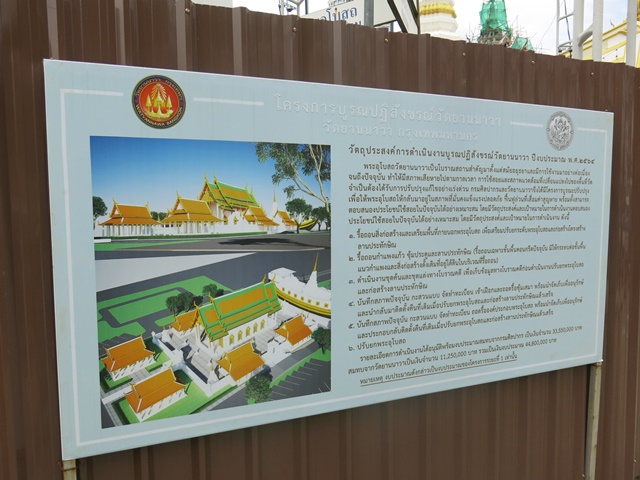

This artistic piece of construction is simple but effective in that simplicity. Three chedis (stupas) represent the three masts on a Chinese junk, and various artefacts surround the main body of the temple. A middle-aged lady sat at the entrance to the temple, giving me a friendly smile, but I don’t know if it was the weather, time constrictions, or the fact that I am not actually big on exploring the inside of a temple that made me decide against going in. Reading up about it, there are supposed to be some beautiful paintings inside, but I am happy just to explore the surrounds, see how it fits into the bigger picture of the temple compound, and how that compound itself fits into the broader picture of its location within the city.
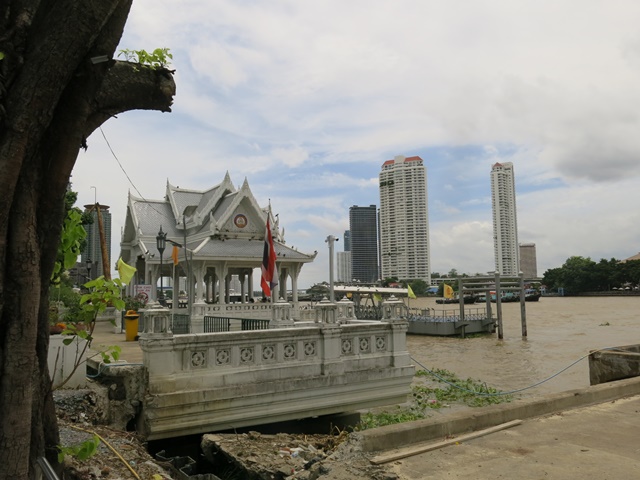
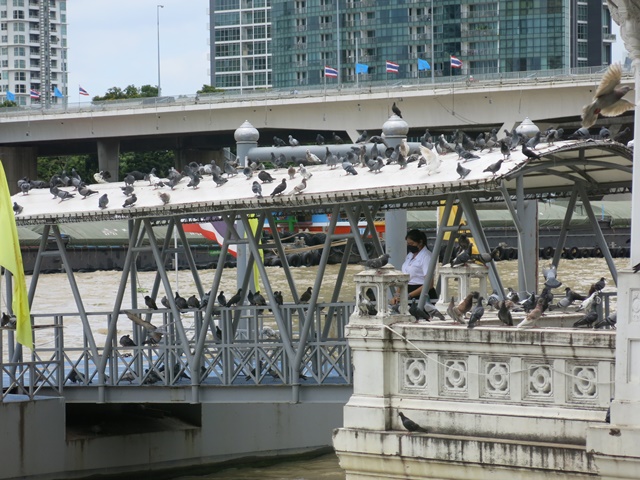

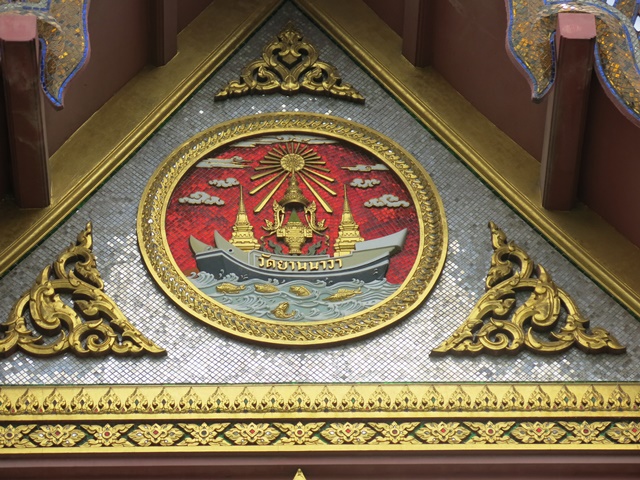

Renovation work is being carried out, so part of the temple grounds are fenced off, but there is still plenty to see, especially if you head down to the river’s edge where a river boat pier is a hanging out spot for half the pigeon population of Bangkok. Looking back towards the temple, there is not that much of a view, just a rubbish-filled car park, but it is interesting to see the architecture and scale of the much bigger buildings that stand behind the entrance way. More recent in age, but now abandoned and a lot dingier and grimier by the looks of things. I came to the conclusion that what I need is a return visit on a sunnier day and see how a change in light affects me mood and my interest in the temple; maybe a peek inside is called for after all.


